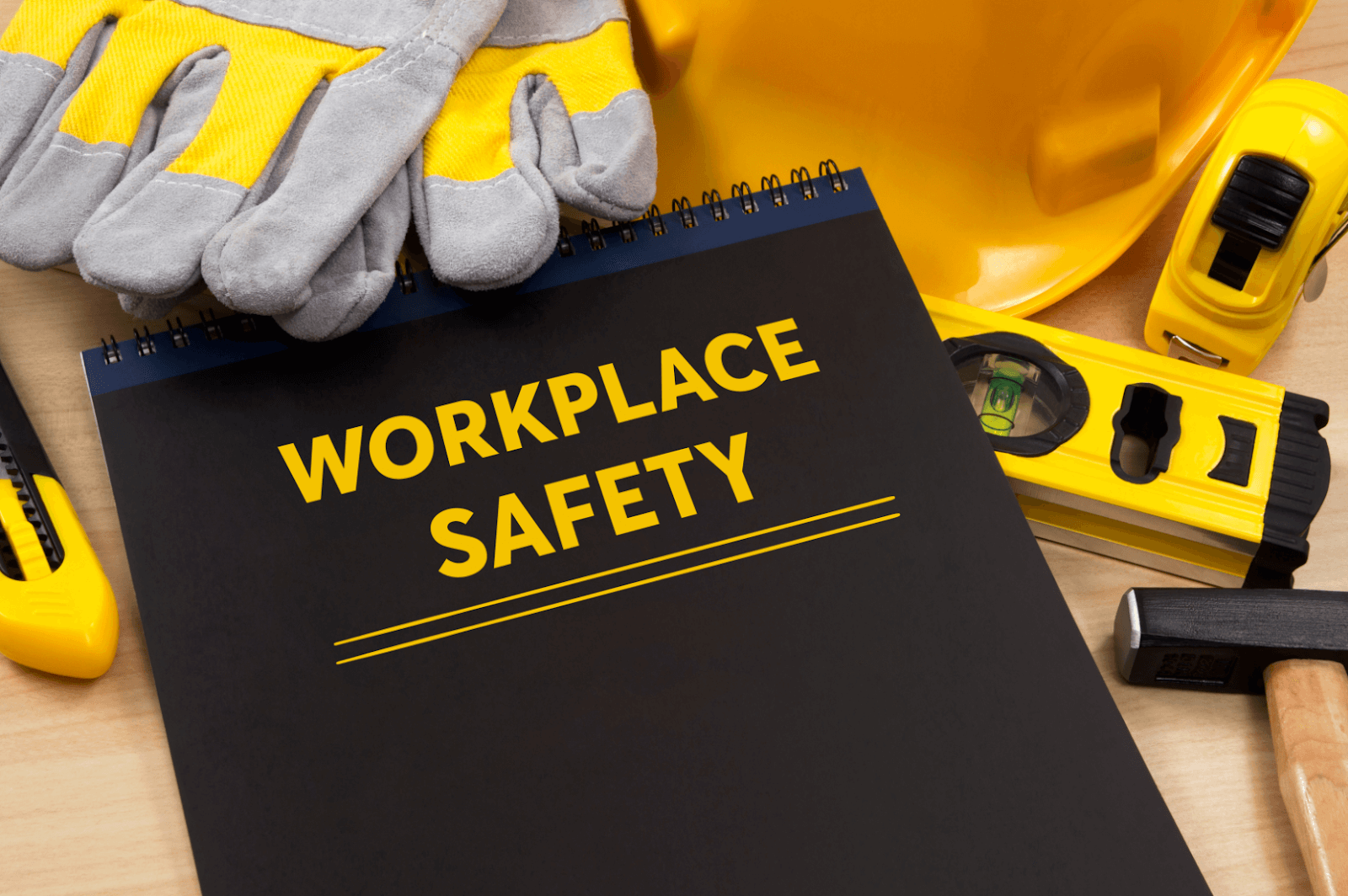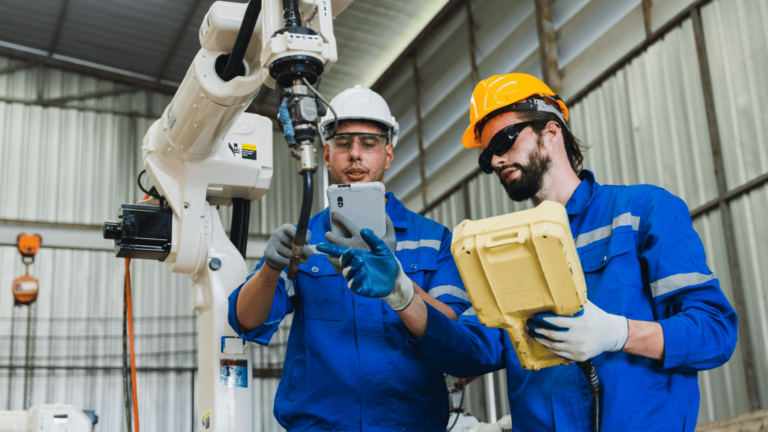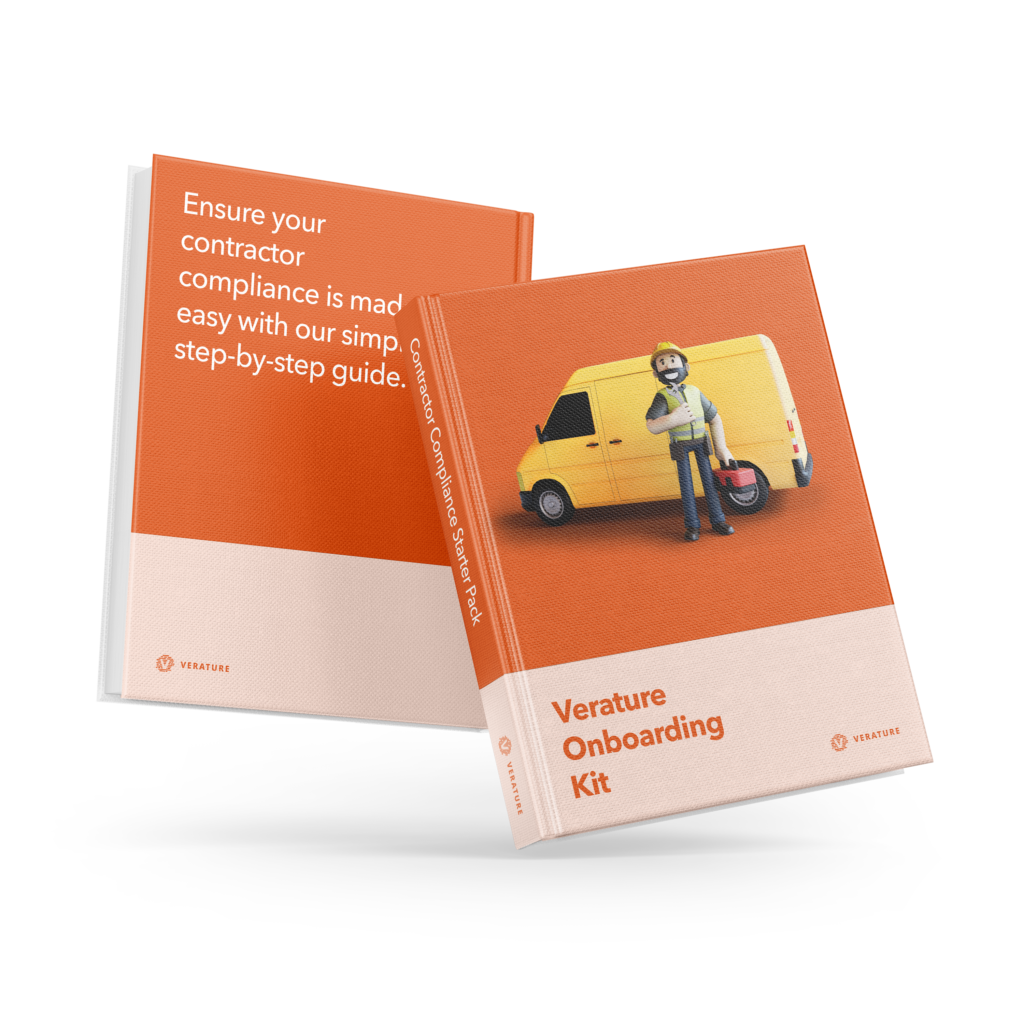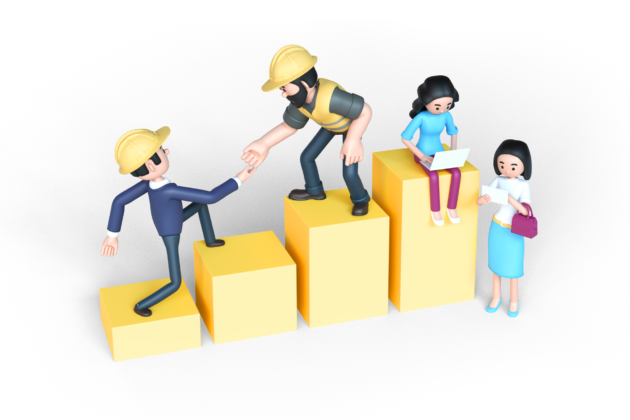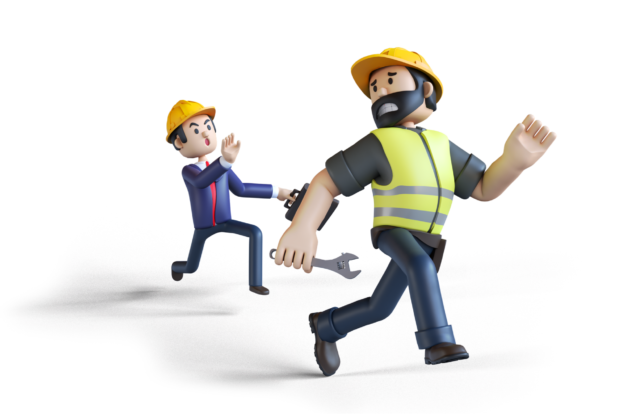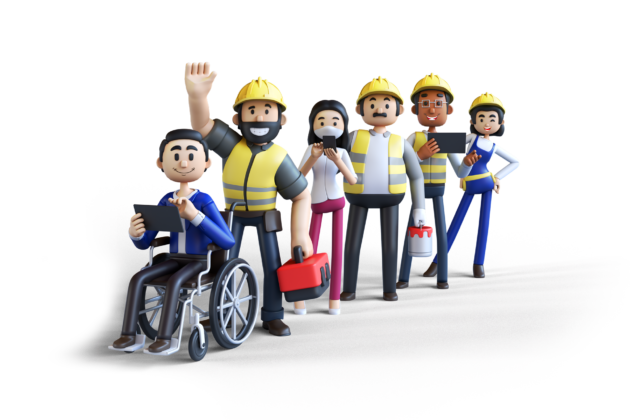- Why Verature?Find out why Verature is the best system for continuous contractor compliance.
- Arrive, Work & Stay Safe
- Removes Paper & Spreadsheets
- Tracks Key Contractors
- Instant 360 Visibility
- Contractor Management Dashboards
- Why Contractor Management Software
- Our Customer Reviews
- Pricing
We don’t hide behind fancy sales teams before we tell you, our prices.- Clients
See who we are working with and what they have to say about Verature.- Resources
Check out our blog, useful guides, whitepapers and product videos.- Prequalification and Induction Guide
- Contractor Compliance Guide
- Mini-Audit your Permit to Work System
- Health and Safety Audit Checklist
- Resource Library
- Blog
Book a demo
The 5-Step Risk Assessment: A Comprehensive Guide for Workplace Safety
In the United Kingdom, employers have a legal duty to ensure the health, safety, and welfare of their employees while at work. One of the key tools in fulfilling this obligation is risk assessment, a systematic process of identifying hazards, evaluating the associated risks, and implementing appropriate control measures. By conducting thorough risk assessments, organisations can prevent accidents, safeguard their workforce, and maintain compliance with the Health and Safety at Work etc. Act 1974 and its supporting regulations.
Step 1: Identify Hazards
The first step in the risk assessment process is to identify potential hazards in the workplace. A hazard is anything with the potential to cause harm, such as substances, equipment, or work practices. To effectively identify hazards, employers should conduct regular workplace inspections using checklists tailored to their specific industry and operations. Additionally, reviewing incident reports, safety data sheets, and engaging employees for feedback can uncover potential risks that may have been overlooked during inspections.
One example of identifying hazards in a construction site would be recognising the risks associated with operating heavy machinery, working at height, and exposure to hazardous substances like cement or paint. By utilising resources like the Health and Safety Executive’s (HSE) Construction (Design and Management) Regulations Approved Code of Practice and guidance, employers can ensure a comprehensive approach to hazard identification on construction sites.
Step 2: Decide Who Might Be Harmed and How
Once the hazards have been identified, the next step is to determine who might be harmed by each hazard and how. This includes employees, contractors, visitors, and even members of the public who may be affected by the organisation’s activities. For example, in a factory setting, the risk assessment should consider the potential harm to workers operating machinery, such as lacerations or crush injuries, as well as the risks to pedestrians in the vicinity, such as being struck by moving vehicles or falling objects.
Step 3: Evaluate the Risks and Decide on Precautions
After identifying hazards and determining who might be harmed, the next crucial step is to evaluate the risks associated with each hazard. This process involves assessing the likelihood of an incident occurring and the potential severity of the consequences should it happen. By understanding both the probability and impact of risks, organisations can prioritise their responses effectively.
Risk Evaluation Methods
One common approach to risk evaluation is the use of a risk matrix, which categorises risks into three levels: low, medium, and high. This visual tool helps organisations quickly identify which risks require immediate attention and which can be monitored over time.
Once the risks have been evaluated, it is essential to determine appropriate control measures to mitigate them. Control measures can be classified into several categories:
- Engineering Controls: These involve physical modifications to the workplace or equipment to reduce exposure to hazards. For example, installing fume hoods in a laboratory can significantly minimise chemical exposure risks.
- Administrative Controls: These include changes in work procedures or policies to enhance safety. For instance, implementing a rotation schedule for workers in high-risk areas can reduce exposure time.
- Personal Protective Equipment (PPE): When other control measures are insufficient, providing appropriate PPE, such as gloves, goggles, or helmets, can help protect workers from hazards.
For example, in a laboratory setting, assessing the risks of chemical exposure may lead to the implementation of fume hoods, proper labelling of chemicals, and the establishment of safety protocols for handling hazardous
Step 4: Record Findings and Implement Them
Documenting the risk assessment process is vital for ensuring that all findings and actions are clearly communicated and accessible. Effective documentation serves not only as a record of compliance but also as a reference for future assessments and training.
Importance of Documentation
Keeping a detailed record of the risk assessment process allows organisations to track identified hazards, associated risks, and the control measures put in place. This documentation is essential for demonstrating compliance during inspections and audits.
Components of Effective Documentation
An effective risk assessment document should include:
- A summary of identified hazards and the associated risks.
- A detailed account of the control measures that have been implemented to mitigate those risks.
- An action plan outlining the steps required to implement these precautions, along with assigned responsibilities for each task.
For instance, a retail store may document its risk assessment process and action plan for seasonal safety measures. This could include identifying hazards such as increased foot traffic during holiday sales, implementing crowd control measures, and assigning staff to monitor safety protocols.
Step 5: Review and Update as Necessary
Risk assessments are not a one-time task; they require regular reviews to ensure their continued effectiveness. The workplace environment is dynamic, and changes can introduce new hazards or alter existing risks.
Definition
Regular reviews of risk assessments are crucial for maintaining a safe workplace. These reviews help ensure that control measures remain relevant and effective in mitigating risks.
When to Review
Organisations should consider reviewing their risk assessments in the following scenarios:
- After incidents or near misses, identify any gaps in the existing safety measures.
- When introducing new equipment, processes, or changes in work practices that may affect safety.
- Periodically, such as annually, to ensure that the risk assessment remains current and comprehensive.
For example, an office may revisit its risk assessment after implementing changes in work-from-home policies. This review could address new ergonomic concerns related to remote work setups, ensuring that employees continue to have access to the necessary resources and support for maintaining their health and safety.
Importance of Involving Workers in the Process
Involving workers in the risk assessment process is not just a regulatory requirement; it is a fundamental aspect of creating a safe and healthy workplace. Employees are often the first to notice potential hazards and can provide valuable insights that may not be apparent to management.
Benefits of Worker Involvement
- Enhances Hazard Identification and Risk Evaluation: Employees who are familiar with their work environments can identify hazards that may be overlooked during formal assessments. Their firsthand experience allows for a more comprehensive understanding of the risks involved in specific tasks or processes.
- Increases Compliance and Buy-In for Safety Measures: When workers are actively involved in the risk assessment process, they are more likely to understand and accept the safety measures implemented. This buy-in fosters a sense of ownership over workplace safety, leading to higher compliance with safety protocols.
- Fosters a Culture of Safety within the Organisation: Encouraging worker participation in safety initiatives cultivates an organisational culture that prioritises health and safety. This culture not only improves morale but also promotes proactive safety behaviours among employees.
Methods to Involve Workers
- Conducting Surveys or Focus Groups: Gathering feedback from employees through surveys or focus groups can provide valuable insights into potential hazards and areas for improvement in safety practices.
- Forming Safety Committees: Establishing safety committees that include representatives from various departments encourages collaboration and communication regarding safety concerns and solutions.
- Providing Training and Encouraging Open Communication: Offering training sessions on risk assessment and safety protocols empowers employees to contribute effectively. Creating an environment where employees feel comfortable voicing their safety concerns is crucial for ongoing improvement.
Conclusion
Conducting thorough risk assessments is essential for maintaining a safe workplace and ensuring compliance with health and safety regulations. By following the structured approach outlined in this guide, organisations can systematically identify hazards, evaluate risks, and implement effective control measures.
The 5 Steps of Risk Assessment:
- Identify Hazards: Recognise potential sources of harm in the workplace.
- Decide Who Might Be Harmed and How: Determine the individuals at risk and the nature of the harm they may face.
- Evaluate the Risks and Decide on Precautions: Assess the likelihood and severity of risks, and implement appropriate control measures.
- Record Findings and Implement Them: Document the risk assessment process and the actions taken to mitigate risks.
- Review and Update as Necessary: Regularly revisit and revise the risk assessment to ensure its ongoing relevance and effectiveness.
By prioritising risk assessments and involving workers in the process, organisations can create a safer work environment that protects employees and enhances overall productivity.
Contractor Management and Safety: Ensuring Compliance and Protecting Your Workforce
Book a Demo to See if Verature is Right for You!
What Happens During a Demo?
During your demo, we will:
- Listen to Your Business Challenges: We want to understand your unique needs and the specific challenges you face in contractor management and safety.
- Learn More About Your Current Process: We’ll take the time to understand how you currently manage contractors and safety protocols, identifying areas for improvement.
- Guide You Around the System in a Personalised Walk-Through: Experience a tailored demonstration of Verature’s features, showcasing how they can streamline your contractor management processes and enhance safety.
- Help You Identify How Verature Can Fit Your Organisation: We’ll discuss how our system can be customised to meet your specific requirements for contractor management and safety.
- Send You Login Details to Access a Live Demo System: After the demo, you’ll receive access to a live demo system so you can explore the platform at your own pace!
Rest assured, we’ll never use high-pressure sales tactics!
5 Easy Steps to Book:
- Choose a Date: On the calendar, select a date that works for you. Available dates will be clickable and highlighted once selected.
- Select a Time Slot: Choose either a 30-minute or a 60-minute slot. Opt for 30 minutes if you’re unsure about a full demo and need a quick overview or 60 minutes for a comprehensive walkthrough.
- Pick a Convenient Time: From the list of available slots, select a time that suits you best.
- Enter Your Details: Fill in your information and click ‘schedule appointment’ to confirm your booking.
- Receive a Zoom Meeting Invite: You will automatically receive a Zoom meeting invite via the email address provided. (NOTE: Please check your junk/spam folder.)
If you’d like to arrange to use an alternate webinar platform, please get in touch to arrange an alternative at april.waddington@verature.co.uk. Take the first step towards transforming your contractor management and safety processes with Verature. Book your demo today and discover how we can help you achieve continuous compliance and protect your workforce across your organisation!
Book a demoFind out if you’re ready with our Verature Onboarding Kit
Not sure if Verature is right for you? We understand it’s not easy to make a decision on a new system, but that’s why we’ve created our Onboarding Kit to make that that process simple.
Check our package details
Find out no matter what package you choose, you’ll be getting the best features you need for you and your team so you can have continuous contractor compliance.
Make it your own
You’ll get to see and choose your customisation options, and check out the available add-ons and extras so the system is exactly what you want and need.
Quickly getting you started.
Keeping this guide with you, and working closely with us, we can walk you through each step so you can be completely up and running with your own Verature system.
More reasons to use Verature
It’s easy to get started.
Step 1
Book a demo of Verature with the team.
Step 2
We’ll chat through your requirements and see if Verature is right for you.
Step 3
We’ll send you demo access and our onboarding kit to help you decide what you need.
Step 4
You decide if we’re right for you. No pushy sales calls.
Step 5
Like what you see and hear? Let’s get you onboarded with Verature!
